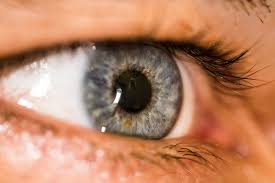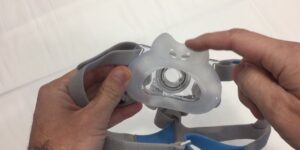There are seven main forms of laser eye surgery that may be performed nowadays. As new technology becomes available, it is anticipated that additional processes will be implemented. The many forms of laser eye surgery are as follows:
• LASIK: This is the most common type of laser eye surgery in the United Kingdom and around the globe. As an abbreviation for Laser-Assisted in Situ Keratomileusis, LASIK stands for Laser-Assisted in Situ Keratomileusis and is one of the early techniques of eye surgery. It is necessary to utilize a blade to generate a flap of the epithelium prior to the laser being focused on the cornea in order to complete the treatment. Thin portions of the cornea would then be removed using a laser, resulting in a successful procedure.
LASIK and intra-LASIK are both procedures that entail cutting the top layer of the cornea, which is quite similar to LASIK. However, with this treatment, a laser is utilized to cut the cornea rather than a blade to get the desired result.
• Wavefront LASIK: Wavefront LASIK is the most current advancement in the field of refractive surgery. A map or 3D scan of the patient’s eye is created during this procedure. It is becoming safer and more accurate to use this process for vision correction since the possibilities of obtaining better eyesight are really high.
• PRK (Photorefractive Keratectomy): PRK is an abbreviation for Photorefractive Keratectomy. Near-sightedness, astigmatism and far-sightedness are all corrected with this kind of refractive surgery. The earliest form of eye surgery was photorefractive keratectomy (PRK). The epithelium is discarded after the removal of the epithelium by the laser in this technique. After a few of days, the epithelium regenerates and the process is repeated.

• LASEK: This is a kind of PRK that combines the methods of lasik and PRK into a one procedure. During this procedure, a thin flap of epithelium is only partly removed with the use of a device known as a trephine, which is then pushed to one side. After that, a bandage contact lens is placed over the eye to protect the flap from moving.
These two forms of laser eye surgery are quite similar to LASIK and LASEK in that they use a laser to correct vision problems in the eyes. When comparing epi-LASIK with LASIK, the most significant distinction is that a dull blade is utilized to form a tiny corneal flap in epi-LASIK.
Epi-LASEK is a variation on the LASEK technique that makes use of a blunt blade as well.
Laser Eye Surgery Myths and Facts
The fact that this operation is done on a particularly sensitive organ of the body has resulted in a large number of laser eye surgery myths being spread over the course of time.
The most well-known of them is the possibility of becoming blind. It is highly unusual for complications to arise from laser eye surgery, and no cases of blindness have been documented as a result of this procedure. Patient reports have shown that dry eyes are a prevalent adverse effect of the medication over time.
It is also a common misconception that the treatment is a placebo surgery since it is finished in a short amount of time. The flap of corneal tissue is pushed aside or entirely removed from the eyes during the procedure. In addition, the laser has a real influence on the correction of one’s vision. Despite the fact that it is a delicate process, it is nonetheless considered surgery.
Furthermore, some individuals claim that laser eye surgery might cause burns to the eye if the laser is concentrated on it for an extended period of time. This, like many other common misconceptions concerning laser eye surgery, is just not true. Using cool lasers to do laser surgery is required by the procedures used to perform laser surgery so that the eye does not get burned.
The assumption that the operation is too young to understand the outcomes and success rate is another widespread misconception. This isn’t the case at all. It has been performed on millions of patients since 1987, with a considerable number of them seeing favorable outcomes as a consequence of the operation.
Last but not least, the assumption that the operation is unpleasant is likewise unfounded. Before any operation, a trained surgeon would always deliver anaesthetic eye drops to the patient. However, you may have some pressure on your eyes during the procedure, and some people report moderate discomfort after the procedure.
Who is a good candidate for laser eye surgery?
Laser eye surgery is a permanent and more efficient method of treating people with vision impairments. Unfortunately, it is not appropriate for everyone. Candidate qualifications include the following:
- no history of corneal disorders
- not being breastfeeding or pregnant
- having stable vision in the previous year
- wearing a prescribed pair of glasses or contact lenses
- being at least 21 years old.
Unfortunately, if you do not match all of the standards outlined above, you may want to seek other vision-correction procedures instead.
Several Pointers to Consider Before and After Your Surgery
1. Do not use cosmetics, perfume, or hair products, and do not consume alcoholic beverages: Laser therapy is an extremely sensitive technique that should only be performed by a qualified professional. Patients are encouraged not to wear makeup, perfume, or hair products during their procedure in order to limit the risk of problems and prevent irritation of the eye.
2. Keep your anxieties at bay during the process: Despite the fact that an anaesthetic is used to keep the eye numb, you will remain awake during the procedure. While the laser is being utilized, try not to move your head too much.
3. Avoid scratching the eye since doing so might cause the corneal surface to get scratched.
Final thoughts
When it comes to providing a permanent solution to vision problems, laser eye surgery is becoming more popular. This surgery is a better solution for short- and long-sightedness than it is for astigmatism, which is characterized by an uneven shape of the cornea. If you have any concerns regarding the surgery, you should discuss them with your surgeon before you go through with it.





